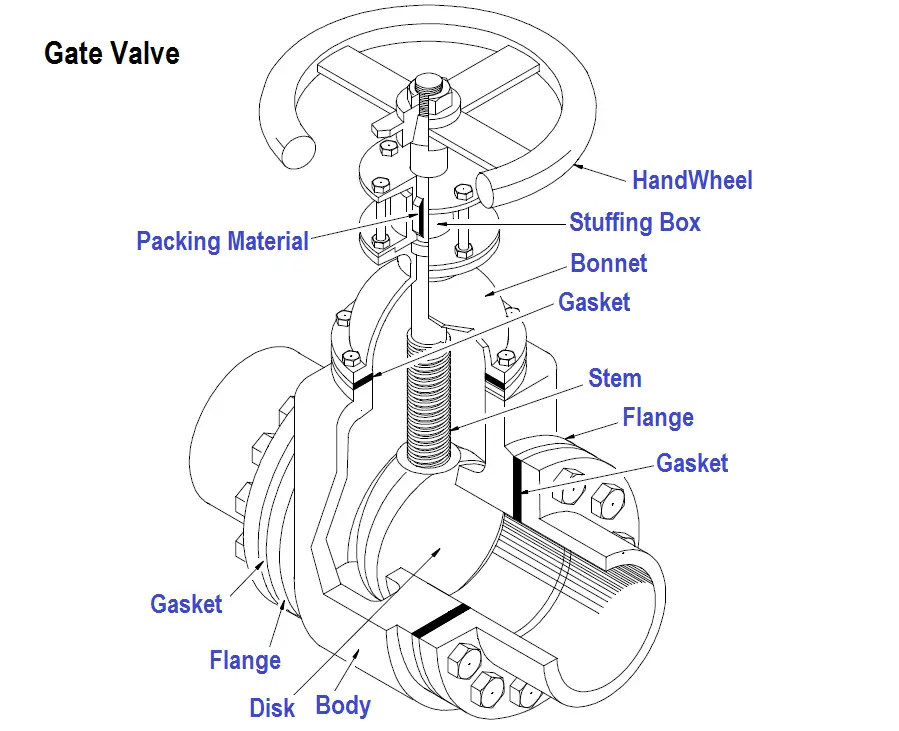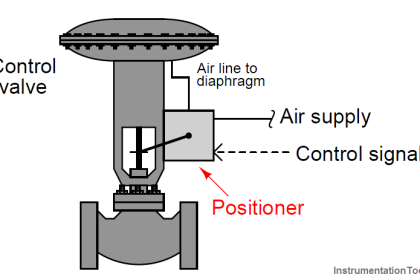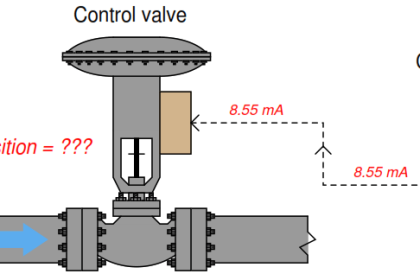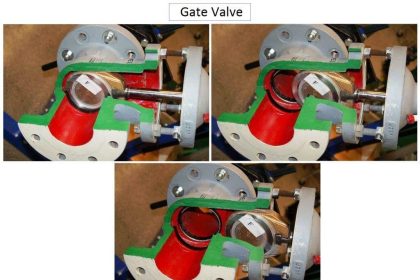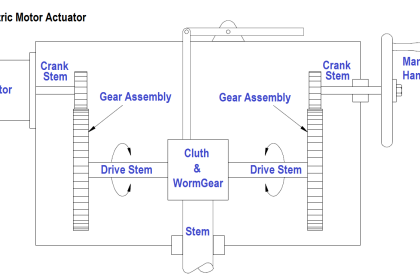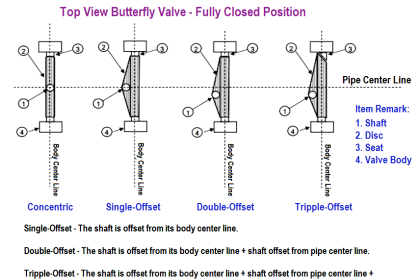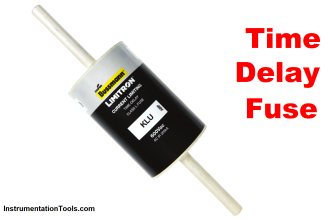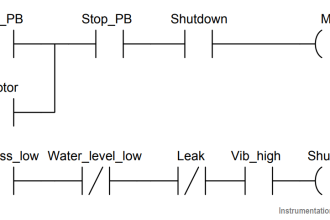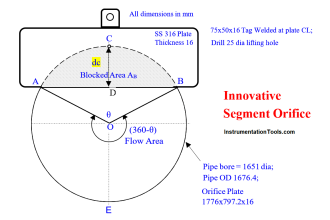A gate valve is a linear motion valve used to start or stop fluid flow; however, it does not regulate or throttle flow.
The name gate is derived from the appearance of the disk in the flow stream.
What is Gate Valve ?
The disk of a gate valve is completely removed from the flow stream when the valve is fully open. This characteristic offers virtually no resistance to flow when the valve is open. Hence, there is little pressure drop across an open gate valve.
When the valve is fully closed, a disk-to-seal ring contact surface exists for 360°, and good sealing is provided. With the proper mating of a disk to the seal ring, very little or no leakage occurs across the disk when the gate valve is closed.
Figure : Gate Valve
On opening the gate valve, the flow path is enlarged in a highly non-linear manner with respect to percent of opening. This means that flow rate does not change evenly with stem travel.
Also, a partially open gate disk tends to vibrate from the fluid flow. Most of the flow change occurs near shutoff with a relatively high fluid velocity causing disk and seat wear and eventual leakage if used to regulate flow.
For these reasons, gate valves are not used to regulate or throttle flow.
A gate valve can be used for a wide variety of fluids and provides a tight seal when closed.
Disadvantages of Gate Valve
The major disadvantages to the use of a gate valve are:
- It is not suitable for throttling applications.
- It is prone to vibration in the partially open state.
- It is more subject to seat and disk wear than a globe valve.
- Repairs, such as lapping and grinding, are generally more difficult to accomplish.
